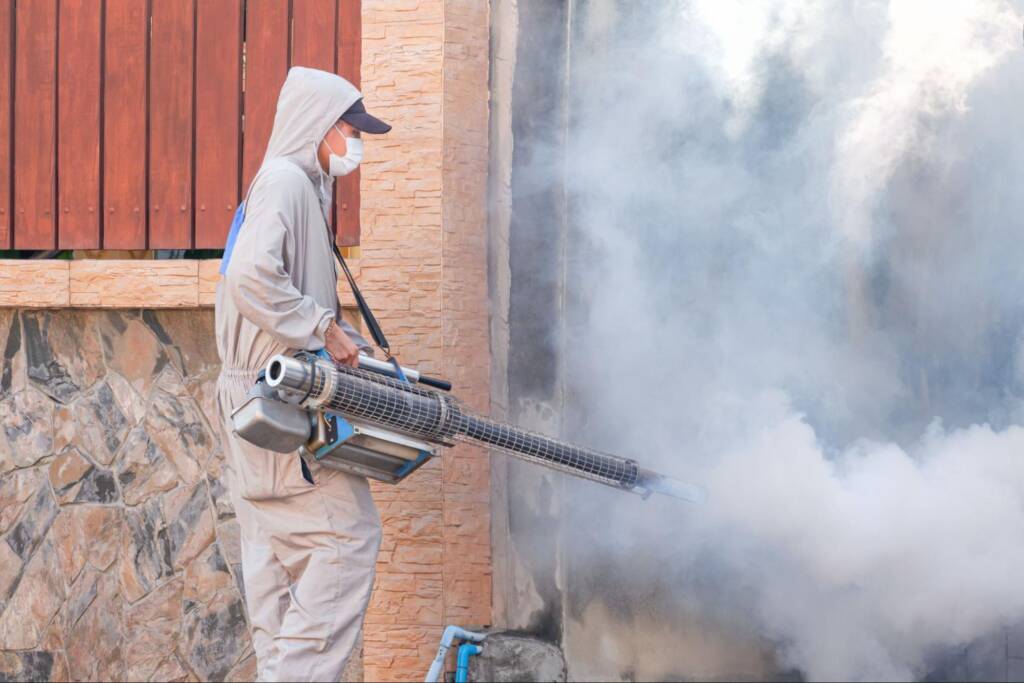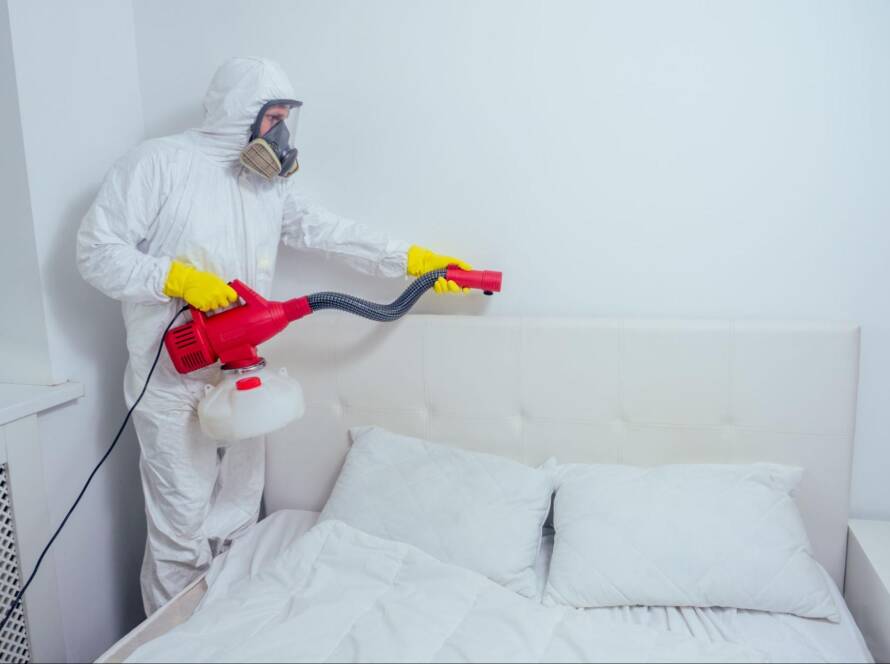Pest control is crucial to maintaining a healthy, safe, and comfortable living environment. By addressing infestations and preventing future problems, pest control exterminators help protect your property from damage, contamination, and potential health risks. The frequency of hiring a pest control exterminator depends on several factors, including the type of pests, the severity of the infestation, and the property’s condition. For some pests, such as termites or rodents, more frequent visits may be necessary, while for others, like seasonal insects, occasional treatments may be sufficient. Regular inspections and treatments are key to controlling pest problems before they escalate into larger issues.
How to Determine if You Need a Pest Control Exterminator
If you notice signs of pest activity, taking immediate action is important to prevent further damage and health risks. Pest control exterminators can help identify the source of the infestation and provide effective solutions. Recognizing the warning signs enables you to schedule a routine for hiring a pest control exterminator.
Signs of an Active Infestation
Seeing live pests, such as rodents or insects, indicates an infestation is underway. Droppings, nests, or property damage are common indicators of an active problem. Prompt treatment can prevent the infestation from worsening.
Damage to Property or Belongings
Visible damage, such as gnaw marks on furniture, holes in walls, or chewed-up wiring, often suggests pests like rodents or termites. This damage can affect the structure of your property and cost significant money to repair. An exterminator can prevent further destruction and safeguard your home.
Unpleasant Odors
Unpleasant smells, such as a musty or foul odor, are often caused by pests like rodents or decaying insects. These odors may come from dead pests or waste left behind, indicating an ongoing infestation. It’s essential to act quickly and address the issue before the smell worsens.
Unexplained Allergic Reactions
Pests such as cockroaches or rodents can trigger allergic reactions like sneezing, itching, or respiratory issues. Their droppings and body parts may be floating in the air, triggering allergic reactions. If these symptoms occur consistently, contacting a pest control expert is necessary to identify and remove the source.
Presence of Egg Cases or Shed Skins
Egg cases or shed skins are clear signs of breeding pests like bed bugs or cockroaches. These remnants indicate that pests are actively reproducing in your home. An exterminator can effectively eliminate the infestation and prevent future problems.
Factors That Affect Scheduling a Pest Control Exterminator
Scheduling pest control services depends on various factors influencing how often an exterminator is needed. These factors include the type of pests present, the size and layout of your property, and seasonal changes that may impact pest activity. Understanding these elements ensures that pest control measures are effective and appropriately timed.
Types of Pests
Different pests require varying levels of attention and control. For example, termites and rodents often necessitate frequent treatments due to their destructive nature, while insects like ants and cockroaches may only require periodic visits. The severity of the infestation also dictates how often treatments should occur. Understanding the pest types helps tailor the pest control plan to address specific needs.
Property Size and Layout
The size and layout of your property impact how pests invade and spread. Larger properties with more entry points may require more frequent treatments to prevent pests from spreading throughout the space. A property with a complex design or various structures may also need additional inspection areas. Properly assessing your property ensures pest control is effective across all areas.
Seasonal and Climate Changes
Pests are often more active during certain seasons, such as warmer months, when insects like mosquitoes and ants thrive. The local climate can also affect the prevalence of pests, as humidity encourages the growth of mold and attracts rodents. As seasons change, pest behavior fluctuates, influencing the timing and frequency of exterminator visits. Adjusting pest control efforts to seasonal trends helps maintain control throughout the year.
Previous Infestations and Recurrence Rate
If you’ve experienced pest problems, the likelihood of future infestations increases, requiring more frequent treatments. Some pests, like termites, may have lasting effects and need long-term control plans. Regular inspections help catch early signs of recurring problems. Staying vigilant and scheduling regular visits reduces the risk of major infestations.

Routine Pest Control Exterminator Services and Frequency
Routine pest control services are essential for maintaining a pest-free environment and preventing future infestations. The frequency of these services varies depending on the level of risk, type of property, and seasonal factors. Regular visits ensure that pest control measures are applied consistently, addressing potential problems before they become significant. Consistent maintenance provides immediate and long-term protection, reducing the likelihood of pest-related damage or health concerns.
Monthly Visits for High-Risk Infestations
Monthly pest control visits are often recommended for properties with a high risk of infestation, such as those affected by rodents or termites. These pests can cause significant damage if left unchecked, making frequent treatments necessary to monitor and prevent their spread. Monthly visits focus on thorough inspections, targeted therapies, and preventative measures. This frequency helps manage persistent infestations and addresses any issues promptly.
Quarterly Visits for Common Household Pests
Quarterly visits are generally sufficient to maintain control of more common pests, such as ants, cockroaches, and spiders. These pests are less invasive and easier to manage with regular treatments, typically applied every three months. Quarterly visits help identify early signs of an infestation and provide necessary treatments before problems escalate. This frequency strikes a balance between cost-effectiveness and pest prevention.
Seasonal Adjustments for Outdoor Pests
Seasonal changes can affect pest activity, with some pests becoming more active during specific times of the year. For example, mosquitoes, ticks, and other outdoor pests may require more frequent treatments during spring and summer. In the fall and winter, treatments may be focused on keeping rodents and other pests from entering indoor spaces. Adjusting the frequency of pest control services according to the season helps maintain consistent protection.
One-Time Treatments for Specific Issues
Sometimes, a one-time treatment may be needed for specific pest problems, such as a brief infestation of fleas or bed bugs. These treatments are typically more intensive and focused on resolving the issue quickly. While one-time treatments may not provide ongoing protection, they can quickly eliminate pests. Depending on the severity of the issue, the exterminator may recommend follow-up visits to ensure the problem does not return.
Pest Control Exterminator Frequency for Different Pests
The frequency of pest control services varies based on the type of pests you’re dealing with. Some pests require regular attention due to their aggressive nature or ability to cause significant damage, while others may only need periodic treatments. Understanding the specific needs of different pests helps tailor the pest control schedule for the most effective results. Here’s a breakdown of the recommended frequency based on common pests.
Rodents
Rodents, such as rats and mice, are persistent pests that can cause considerable damage to your property. Since they can reproduce quickly, monthly treatments are often necessary to keep them under control. Regular visits allow for early detection of nests and entry points, helping prevent infestations. If a rodent problem is particularly severe, you may need more frequent visits to fully eliminate the issue.
Termites
Termite infestations are highly destructive and can go unnoticed for long periods. Due to the extent of the damage they can cause, monthly or quarterly visits are recommended for properties with a history of termite activity or in areas prone to infestations. Regular monitoring and treatment help protect the property’s foundation and structure. Specialized treatments like baiting systems or liquid treatments are typically applied to prevent termite colonies from thriving.
Ants
Ants are common pests that usually require quarterly treatments for effective control. Depending on the species, ants can be seasonal or year-round pests, with some varieties nesting indoors during colder months. Treatment frequency may increase if a significant infestation is detected or if the ants continue to return after treatments. Identifying the source of the infestation is crucial in determining how often pest control is needed.
Cockroaches
Cockroaches are resilient pests that thrive in warm, dark environments. Monthly visits may be necessary to ensure complete elimination and prevent recurrence if you’ve had a previous infestation. Quarterly treatments are typically sufficient for ongoing maintenance, focusing on areas where cockroaches are likely to hide. Regular monitoring is important, as roaches can quickly spread throughout a property if left unchecked.
Spiders
Spiders are generally not as invasive as other pests but can be a nuisance, especially in basements, attics, and garages. Quarterly treatments are effective for controlling common household spiders. However, if a sudden influx of spiders or a specific species poses a risk, more frequent treatments may be necessary. Removing spider webs and sealing entry points can also help reduce their presence.
Bed Bugs
Bed bugs require intensive treatment, often involving a one-time treatment that includes vacuuming, steaming, and chemical application. If the infestation is extensive, additional treatments may be necessary, and visits should be scheduled monthly to ensure no eggs remain. Since bed bugs are difficult to eradicate, ongoing monitoring and prevention measures may also be recommended, such as mattress covers and bed frame inspections.
Mosquitoes
Mosquito control typically requires monthly treatments during the warmer months when mosquitoes are most active. Seasonal treatments are often applied to areas around the property, such as gardens, lawns, and standing water, where mosquitoes breed. Using insect growth regulators and larvicides as a regular treatment plan can effectively manage mosquito populations and reduce their presence during peak seasons.

Scheduling a Pest Control Exterminator
Scheduling a pest control exterminator is essential for maintaining a pest-free environment. The scheduling frequency depends on factors such as the type of pests, the severity of the infestation, and your property’s specific needs. Regular visits help manage pests before they become larger issues, protecting your property from damage and reducing health risks. By staying proactive and maintaining pest control, you ensure your home or business remains safe and secure throughout the year.
Ensure your property stays safe from pests—read more about pest control exterminator services on the Thrash Pest Control blog.



